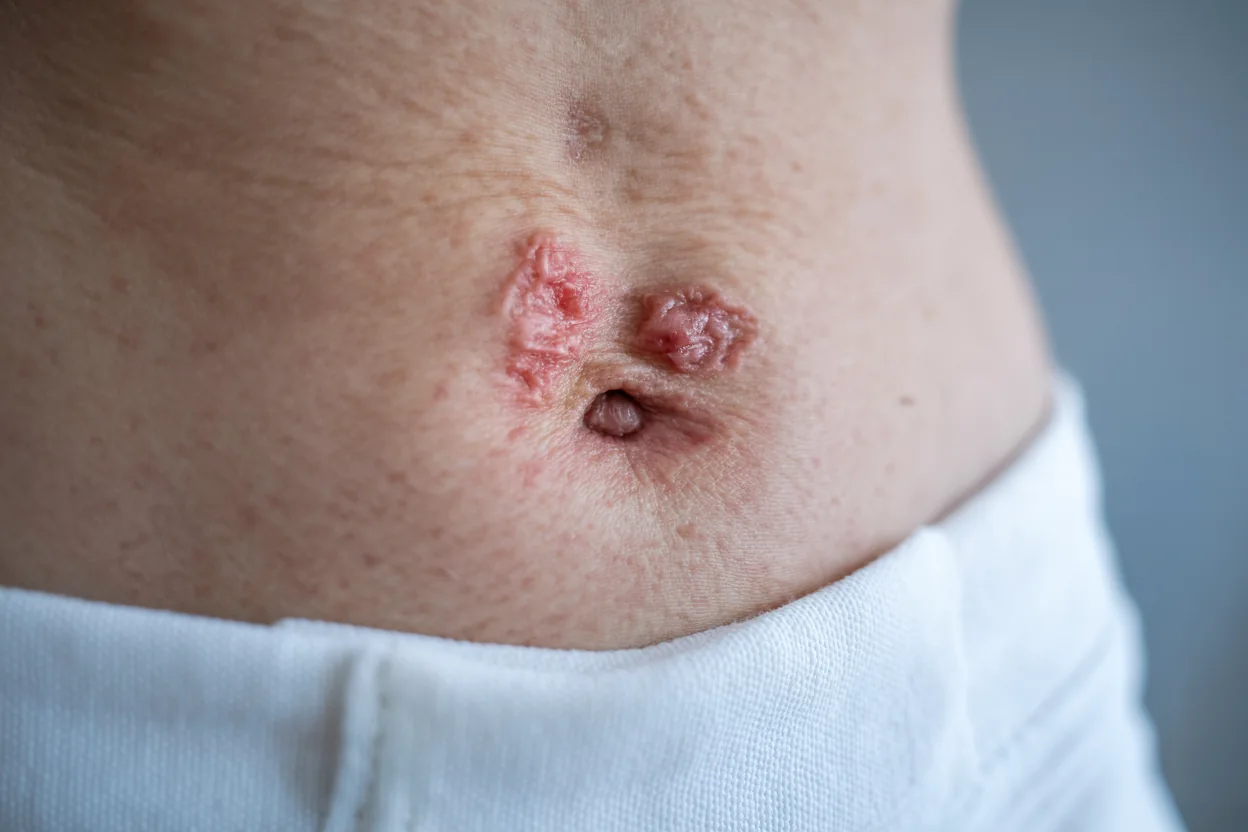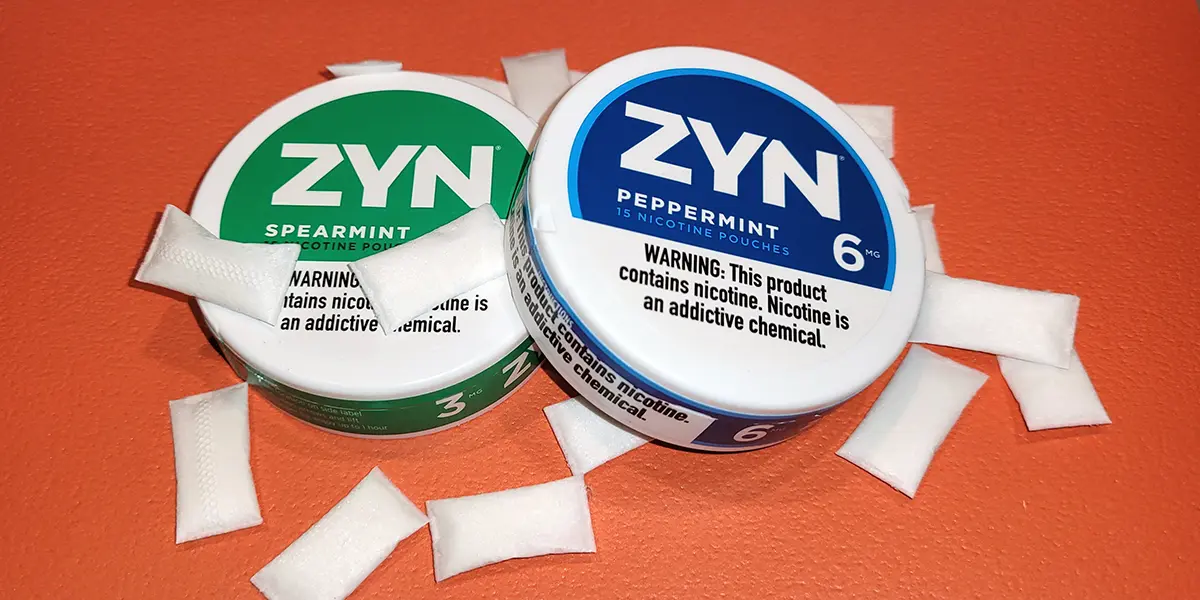When you hear the phrase belly button infection, it might sound a little strange—like, how can such a tiny spot cause trouble? But here’s the thing: while most cases are nothing more than mild irritation, there are rare situations where ignoring an infected navel can lead to serious health problems. People often ask, “Can a belly button infection kill you?”, and the short answer is: not usually, but in very specific cases, it can turn into something much more dangerous.
Most of the time, infections in the navel clear up with simple cleaning or mild treatment. Still, if bacteria or fungi spread deeper into the skin or bloodstream, complications like cellulitis or even sepsis could develop. Those are rare, but they explain why you shouldn’t brush off the early warning signs.
In this guide, we’ll walk through symptoms, causes, when you should worry, and what treatments actually work. And don’t stress too much—armed with the right info, you’ll know exactly when it’s just a minor nuisance and when it’s time to get checked out.
I. What Is a Belly Button Infection?
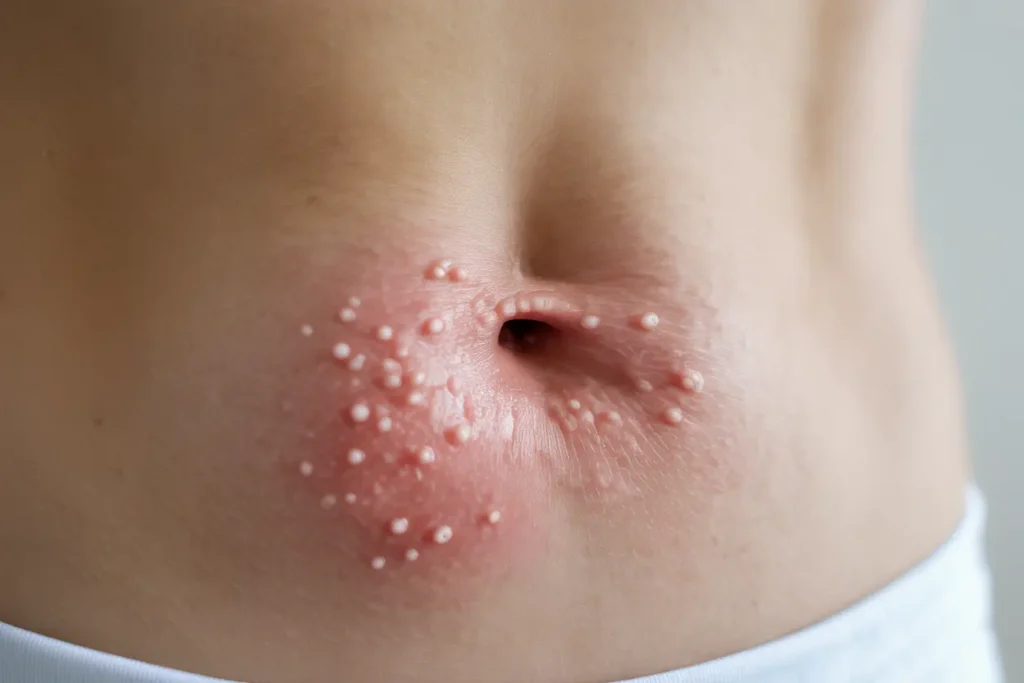
Can a belly button infection kill you? A belly button infection is basically an irritation or overgrowth of bacteria, fungi, or other organisms inside or around the navel. Because the belly button is a small, tucked-away area, it’s surprisingly easy for sweat, lint, soap residue, and even skin oils to get trapped inside. That warm, moist little pocket is a perfect home for microbes.
A. Understanding the Anatomy of the Navel
- Why the navel is prone to infection: It has folds, crevices, and (especially for “innie” navels) limited airflow, which traps bacteria.
- Innie vs. Outie: People with “innies” often deal with more buildup, while “outies” are usually easier to clean but still not immune to infection.
B. What an Infection Looks Like
Early symptoms of a navel infection are pretty easy to overlook. You might notice:
- Mild redness or itching
- A light odor or discharge
- Slight tenderness when pressed
If ignored, these can progress to:
- Swelling or visible pus
- Pain that worsens instead of improving
- Crusting around the opening
Pro Tip: If you’re unsure whether your belly button looks normal, snap a photo on day one and compare it over a few days. Worsening redness, spreading swelling, or discharge that changes color is a clear sign to take it seriously.
II. Common Causes of Belly Button Infections
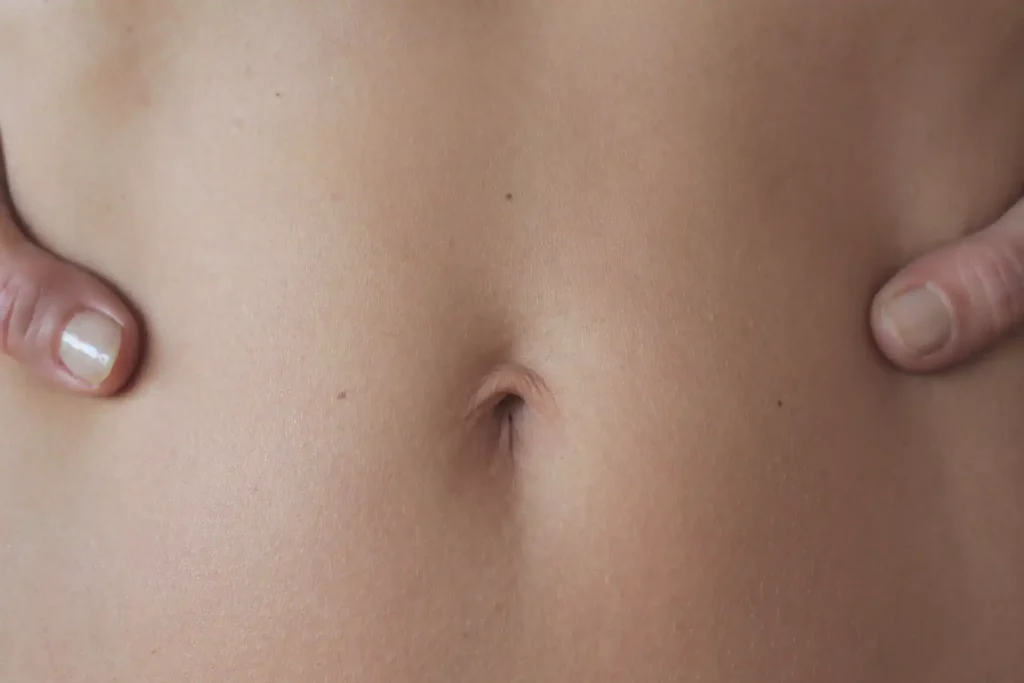
If you’re wondering what causes a belly button infection in the first place, the truth is it can come from several different sources. The navel is warm, often moist, and rarely sees much airflow—all of which makes it an easy hiding spot for bacteria or fungi to multiply. Here’s a breakdown of the main culprits:
A. Bacterial Infections
- Sweat + Moisture: When sweat and oils sit trapped in your navel, they feed bacteria.
- Debris Buildup: Dead skin cells, lint, and soap residue make things worse.
- Common Bacteria: Staphylococcus and Streptococcus are often responsible for a typical navel infection.
B. Fungal Infections (Yeast / Candida)
- Thrive in warm, damp places (like your belly button).
- More common in people who are overweight or have diabetes.
- Often appear with a white, cottage cheese–like discharge and intense itching.
C. Piercing-Related Infections
- Belly button piercings are trendy but can create tiny wounds.
- Improper aftercare or non-sterile jewelry can introduce infection.
- Nickel or low-quality metals may also cause irritation that mimics infection.
D. Rare but Serious Causes
- Omphalitis (infection of the umbilicus, more common in newborns but possible in adults).
- Urachal cysts or anomalies, where leftover tissue from development becomes infected.
Pro Tip: If you recently got a piercing or have diabetes, check your belly button daily. Early spotting of redness or discharge can save you from a much bigger issue.
Here’s a quick table to summarize the common causes:
| Cause | Who’s Most at Risk | Typical Symptoms |
| Bacterial Infection | Anyone (esp. poor hygiene) | Redness, swelling, yellow pus |
| Fungal Infection (Candida) | Diabetics, overweight, humid climates | White discharge, itching, bad odor |
| Piercing-Related Infection | Recently pierced individuals | Pain, swelling, discharge near jewelry |
| Rare Causes (Omphalitis, Cyst) | Infants, adults with anomalies | Severe pain, abscess, systemic symptoms |
III. Can a Belly Button Infection Be Life-Threatening?
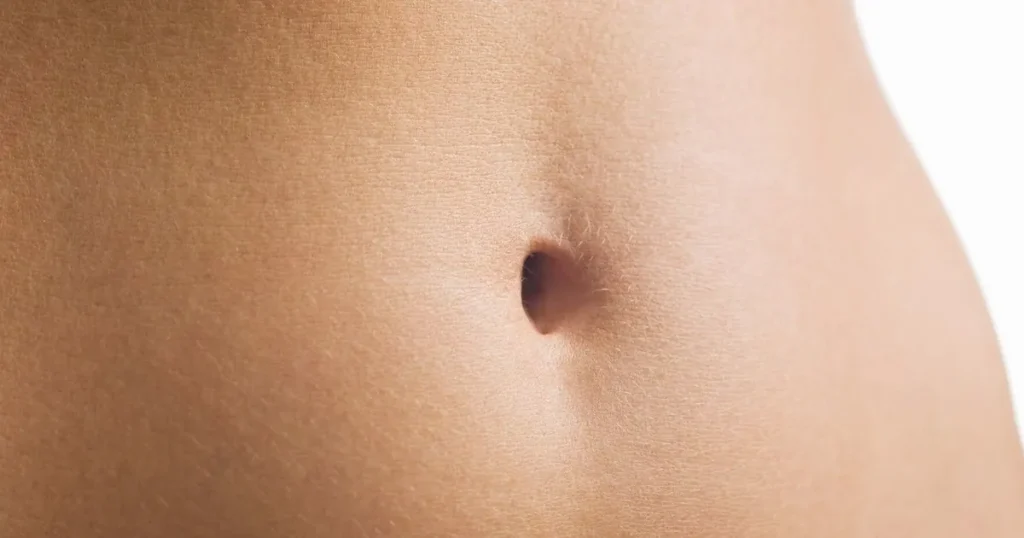
Now, let’s tackle the big question: can a belly button infection kill you? For most people, the answer is no—but in rare cases, yes, it can turn into something dangerous.
A. When It’s Just a Localized Infection
The good news? Most navel infections stay small and local. They might look unpleasant or smell bad, but with proper cleaning and maybe a bit of over-the-counter treatment, they usually clear up within a week.
B. Signs of a Spreading Infection
When the infection moves beyond the belly button, that’s when it gets serious. Red flags include:
- Fever or chills
- Red streaks moving out from the belly button
- Thick, smelly pus
- Widespread redness or swelling in the abdomen
C. Potential Complications
If ignored, a belly button infection can lead to complications such as:
- Cellulitis: a deeper skin infection causing painful redness.
- Abscesses: pockets of pus that may need drainage.
- Sepsis: rare but life-threatening, when infection enters the bloodstream.
- Intra-abdominal infections: very uncommon, but possible if there’s a fistula or cyst.
⚠️ Emergency Red Flags: If you have a fever, spreading redness, or severe pain that doesn’t ease with basic care, seek medical attention immediately.
IV. Risk Factors: Who Is More at Risk?
Not everyone has the same chance of developing a belly button infection. Certain conditions and lifestyle habits make some people more vulnerable. If you’ve ever wondered why some people keep getting navel infections more than others, here’s why:
A. Infants and Newborns (Omphalitis)
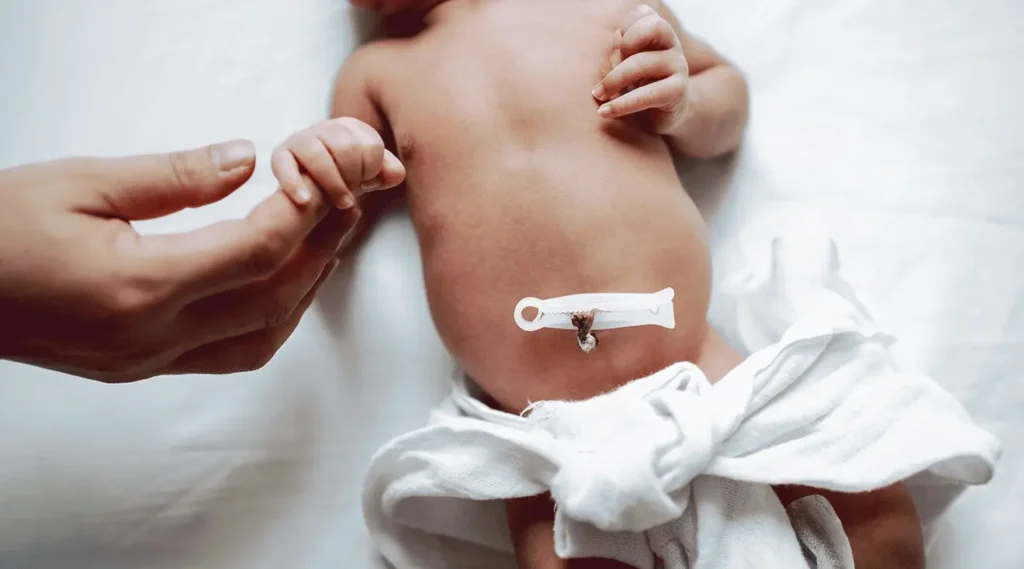
- Newborns are at high risk because their umbilical cord stump is essentially an open wound.
- Omphalitis in babies can progress quickly and requires medical attention.
B. Adults with Diabetes or Obesity
- High blood sugar levels makes it easier for bacteria and fungi to grow.
- Skin folds and excess moisture create the perfect environment for a fungal belly button infection.
C. People with Poor Hygiene Practices
- Not washing or drying the navel stone after showers leaves sweat and soap trapped inside.
- Over-cleaning with harsh products can also irritate the skin, ironically making infections more likely.
D. Those with Belly Button Piercings or Recent Surgery
- Piercings introduce a new entry point for germs.
- Surgical incisions near the navel can get infected if aftercare is skipped.
Here’s a quick risk comparison table:
| Risk Group | Why They’re at Risk | Common Outcomes |
| Newborns (Omphalitis) | Open umbilical stump, weaker immunity | Rapid infection spread, fever |
| Diabetics / Obese Adults | Moist folds, yeast thrives on sugar | Recurrent fungal infections, slow healing |
| Poor Hygiene | Trapped sweat, soap, or lint | Mild bacterial infection, odor |
| Piercing / Post-Surgery | Broken skin barrier | Local infection, abscess, jewelry rejection |
V. How to Tell If You Have a Belly Button Infection
Spotting an infected belly button early can make all the difference. Many people confuse normal lint or mild irritation with an actual infection, so here’s how to tell the difference.
A. Visible Signs
- Redness or swelling around the navel stones
- Discharge (yellow, green, or white)
- Crusting or scabbing around the belly button opening
B. Sensory Clues
- A strong odor coming from the navel
- Persistent itching
- Sharp or throbbing pain when pressed
C. Systemic Symptoms (When It’s More Serious)
- Fever, fatigue, or chills alongside belly button pain
- Red streaks spreading across the abdomen
- A lump or abscess near the belly button
Pro Tip: A yeast infection in the belly button usually looks red, shiny, and moist with white patches, while a bacterial infection often causes yellow or green pus.
How long should symptoms last before seeking help?
- Mild belly button infection symptoms often improve within 3–5 days of cleaning and basic care.
- If things don’t improve—or they get worse—it’s time to see a doctor.
VI. At-Home Treatment Options (When It’s Mild)
For most people, a belly button infection starts out mild and can often be treated at home. The key is to catch it early and avoid doing anything that makes it worse. If you’re looking for home remedies for a belly button infection, here are safe and effective options:
A. Cleaning the Area
- Wash gently with warm water and mild soap.
- Use a saline solution (½ teaspoon salt in 1 cup of warm water) to flush out debris.
- Pat dry with a soft towel—never leave the navel damp.
- Avoid harsh cleaners like hydrogen peroxide daily (they can delay healing).
B. Natural Remedies
- Tea tree oil: A natural antifungal; dilute it with a carrier oil before applying.
- Apple cider vinegar: Can fight mild fungal growth; use sparingly and rinse after.
- Aloe vera gel: Soothes irritation and helps with healing.
C. Over-the-Counter Solutions
- Antibacterial ointments like Neosporin are used for bacterial infections.
- Antifungal powders/creams for yeast-related infections.
- Pain relievers (acetaminophen or ibuprofen) if discomfort is significant.
Pro Tip: Always test natural remedies on a small patch of skin first. The belly button is sensitive, and undiluted oils can cause burns or irritation.
VII. When to See a Doctor
Sometimes, no matter what you do, the infection doesn’t improve. If you’re dealing with a belly button infection that won’t heal, it’s time to seek medical help. Doctors can determine whether it’s bacterial, fungal, or something more serious.
A. Signs It’s Time to Visit a Doctor
- No improvement after 3–5 days of at-home care.
- Worsening redness, swelling, or pain.
- Thick pus, foul odor, or blood from the belly button.
- Systemic symptoms like fever, chills, or nausea.
- Persistent bleeding or unusual-colored discharge.
B. Who Should You See?
- General Physician: Good for most routine cases.
- Dermatologist: Best if you suspect fungal infections, eczema, or skin conditions.
- Emergency Care: Needed if you develop a fever, spreading redness, or severe pain.
C. Possible Next Steps
- Prescription antibiotics or antifungals.
- Lab testing of discharge to confirm the cause.
- Drainage of an abscess if present.
Here’s a quick comparison table to help:
| Situation | Can Treat at Home? | Doctor Needed? |
| Mild redness, slight odor, no pus | ✅ Yes | ❌ No |
| Persistent discharge for >5 days | ❌ No | ✅ Yes |
| Fever, spreading redness, severe pain | ❌ No | 🚨 Emergency |
| Recurrent infections in diabetics | ❌ No | ✅ Yes |
VIII. Medical Treatment Options
If home remedies and OTC treatments don’t work, a medical treatment for a belly button infection may be necessary. Doctors can determine the root cause and prescribe targeted therapies.
A. Prescription Medications
- Topical antibiotics: Creams or ointments applied directly to the infected navel.
- Oral antibiotics: Used when the infection spreads beyond the belly button.
- Antifungal creams or pills: For fungal or yeast-related infections.
- Pain management: Doctors may recommend stronger medications if swelling or tenderness is severe.
B. Drainage of Abscesses
Sometimes, a pus-filled belly button infection forms an abscess. In this case:
- A doctor may perform a minor procedure to drain the pus.
- Self-draining at home is not safe, as it can worsen the infection.
C. Testing for Underlying Issues
If the infection keeps coming back, your doctor might:
- Test for diabetes (high blood sugar weakens immunity).
- Look for urachal cysts or fistulas, which can cause recurrent infections.
- Check for immune deficiencies if infections are frequent and severe.
Pro Tip: Never stop antibiotics early, even if the belly button looks better. Incomplete treatment can allow bacteria to return stronger.
IX. Preventing Future Infections
Once you’ve healed, you’ll want to know how to prevent a belly button infection from coming back. Good hygiene and small lifestyle tweaks make a huge difference.
A. Hygiene Tips
- Clean your navel gently during showers with mild soap.
- Dry the belly button completely afterward (use a cotton swab if needed).
- Avoid harsh scrubbing or alcohol-based cleaners—they can irritate the skin.
B. Lifestyle Adjustments
- Maintain a healthy weight: Reduces skin folds where sweat and bacteria thrive.
- Wear breathable clothing: Cotton fabrics help wick away moisture.
- Manage diabetes carefully: Keep blood (blood test) sugar under control and lower infection risk.
C. Piercing Aftercare
- Clean piercings daily with saline until fully healed.
- Avoid touching jewelry with dirty hands.
- Remove infected jewelry only after consulting a doctor.
Here’s a prevention checklist to keep handy:
✅ Wash your belly button during every shower
✅ Dry thoroughly after bathing or sweating
✅ Use breathable fabrics, especially in hot weather
✅ Manage blood sugar if you’re diabetic
✅ Practice safe aftercare for piercings
X. Belly Button Infections in Babies vs. Adults
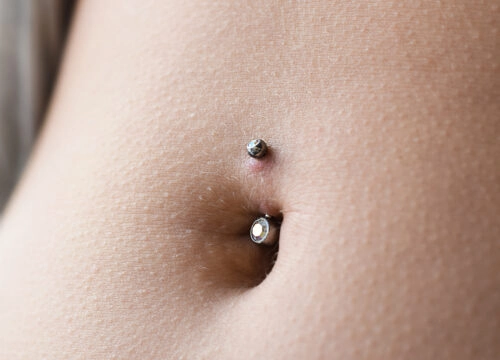
A belly button infection in babies is very different from one in adults. In newborns, the condition is often called omphalitis, and it requires urgent care. Adults, on the other hand, usually deal with mild bacterial or fungal issues unless an underlying condition complicates things.
A. Special Considerations for Infants
- The umbilical cord stump is vulnerable until it fully falls off and heals.
- Omphalitis can spread quickly and may cause fever, lethargy, or irritability.
- Because babies have weaker immune systems, infections can turn serious in hours rather than days.
B. Adult vs. Infant Symptoms and Treatment
| Category | Babies (Omphalitis) | Adults (Navel Infections) |
| Symptoms | Redness around stump, pus, fever, fussiness | Redness, itching, odor, pus, pain |
| Risks | Rapid spread, sepsis if untreated | Usually localized, rare complications |
| Treatment | Immediate doctor visit, IV antibiotics | Home care, OTC meds, doctor if severe |
⚠️ Important: Any signs of omphalitis in a baby require immediate medical attention. Unlike adults, waiting it out is not safe.
XI. Can You Pop or Drain a Belly Button Infection Yourself?

Many people are tempted to “DIY” when they see pus or swelling in their navel. But let’s answer the common search: Should I pop a belly button infection?
A. The Risks of Squeezing or Draining at Home
- Worsens the infection: Bacteria can spread deeper into the skin.
- Causes scarring: Rough handling may damage delicate navel tissue.
- Incomplete drainage: Leaving pus behind often makes the infection worse.
- Risk of sepsis: Forcing infection deeper increases the chance it enters the bloodstream.
B. Safe Alternatives
Instead of popping try:
- Warm compresses to encourage natural drainage.
- Saline rinses to gently flush the area.
- Over-the-counter creams or antifungal treatments if it’s mild.
C. When Only a Doctor Should Handle It
- Large abscesses that need proper drainage.
- Infections with fever, spreading redness, or severe swelling.
- Recurrent infections that suggest an underlying cyst.
Pro Tip: Think of your belly button like an ear piercing—if it’s infected, hands-off is best. Let a professional do the draining if necessary.
XII. How Long Does It Take for a Belly Button Infection to Heal?
One of the most common questions people ask is: “How long does it take for a belly button infection to heal?” The answer depends on the type of infection, your overall health, and how soon you start treatment.
A. Typical Healing Timelines
- Mild bacterial infection: 5–7 days with proper cleaning and OTC ointments.
- Fungal belly button infection (Candida): 1–2 weeks with antifungal creams or powders.
- Piercing-related infection: 2–4 weeks, depending on jewelry and aftercare.
- Severe or recurrent infections: Several weeks if antibiotics or drainage are needed.
B. Factors That Slow Healing
- Diabetes or high blood sugar (slows immune response).
- Poor hygiene (trapped sweat and bacteria).
- Not finishing antibiotics (causes relapse).
- Underlying conditions like urachal cysts or immune deficiencies.
| Infection Type | Average Healing Time | May Require Doctor? |
| Mild Bacterial | 5–7 days | ❌ Usually No |
| Fungal (Yeast) | 1–2 weeks | ❌ If Mild / ✅ If Severe |
| Piercing-Related | 2–4 weeks | ✅ Often |
| Abscess/Complicated Case | 3–6 weeks | ✅ Yes |
Pro Tip: If your belly button infection isn’t showing clear signs of improvement after 5 days, it’s not “just slow healing”—it’s time to see a doctor.
XIII. Myths and Misconceptions About Belly Button Infections
There are a lot of myths online about belly button infections, and believing them can delay proper treatment. Let’s clear up some of the most common misconceptions:
Myth #1: “A belly button infection is always serious.”
- Truth: Most are mild and respond well to simple cleaning. Serious cases are rare but possible.
Myth #2: “Only people with piercings get infections.”
- Truth: Anyone can get an infected navel, especially if hygiene is poor or if there’s excess moisture.
Myth #3: “A bad smell always means infection.”
- Truth: Sometimes odor is just trapped lint, sweat, or dead skin. Infection is usually paired with redness, discharge, or pain.
Myth #4: “You should pop or squeeze an infected belly button.”
- Truth: This can spread bacteria and worsen the infection. Drainage should be left to a medical professional.
Myth #5: “Home remedies work for all cases.”
- Truth: While mild infections respond to salt water, tea tree oil, or OTC creams, severe infections often need prescription antibiotics.
Pro Tip: If your belly button is red, painful, and producing pus, it’s not “just a hygiene issue.” That’s an infection that needs attention.
Conclusion
So, can a belly button infection kill you? For most people, the answer is no—it’s usually mild and responds well to simple treatment. However, if ignored or allowed to spread, a navel infection can become dangerous. Recognizing early belly button infection symptoms, maintaining proper hygiene, and knowing when it’s time to see a doctor are the most reliable ways to stay safe.
Most navel infections heal quickly without complications, but you should always pay attention to warning signs such as spreading redness, fever, pus, or severe pain. These red flags mean the infection might be moving beyond the skin or cause of skin cancer and needs urgent care.
The good news is that prevention is simple. Daily cleaning, keeping the belly button dry, and following proper aftercare if you have a piercing can all reduce the chances of infection. And if symptoms don’t improve within five days, or if they worsen, the safest step is to consult a healthcare provider.
Don’t ignore your belly button—it may be a small part of your body, but it deserves the same care and attention as anywhere else. If you’re ever unsure whether your symptoms are serious, reaching out to a medical professional can give you peace of mind and prevent complications.
Frequently Asked Questions
1. When is a belly button infection serious?
A belly button infection becomes serious when it spreads beyond the navel, causes fever, or leads to extreme swelling and pain. In rare cases, untreated infections may enter the bloodstream and pose a life-threatening risk.
2. What are the belly button warning signs?
Typical warning signs of a belly button infection include redness, swelling, pus, or discharge with a foul odor. If pain intensifies or the infection doesn’t improve after basic care, it should not be ignored.
3. Can a belly button infection be cured?
Yes, most belly button infections can be fully cured with the right treatment such as proper cleaning, antifungal creams, or antibiotics. Healing depends on catching it early and following medical guidance if symptoms persist.
4. Should I go to the ER for a belly button infection?
You should visit the ER if a belly button infection is causing severe pain, spreading redness, fever, or signs of sepsis. These symptoms indicate a dangerous escalation that needs immediate medical attention.
5. What happens if you leave a belly button infection untreated?
An untreated belly button infection can spread deeper into the skin or bloodstream, leading to abscesses or sepsis. While most cases are mild, neglecting symptoms increases the chance of serious complications.
6. How long do infections last?
A mild belly button infection usually clears within 5–7 days with care, while fungal or more stubborn cases may take weeks. Severe infections requiring medical treatment can stretch healing time to a month or more.
7. What organ is near the belly button?
The belly button sits close to the small intestine, stomach, and in some cases the appendix. That’s why belly button infection pain can sometimes feel deeper or radiate to surrounding areas.
8. Can an STD cause a belly button infection?
While uncommon, some STDs may weaken the immune system or cause skin irritation, making a belly button infection more likely. Bacterial or fungal overgrowth can then take advantage of that weakened state.
9. When should I worry about my belly button?
You should worry if your belly button infection produces pus, bleeding, severe swelling, or pain that worsens over time. These red flags point to a more advanced infection that requires medical attention.
10. When should I see a doctor for belly button pain?
See a doctor if belly button infection pain is persistent, worsening, or paired with fever, chills, or spreading redness. Early medical care ensures faster healing and prevents the risk of complications.

